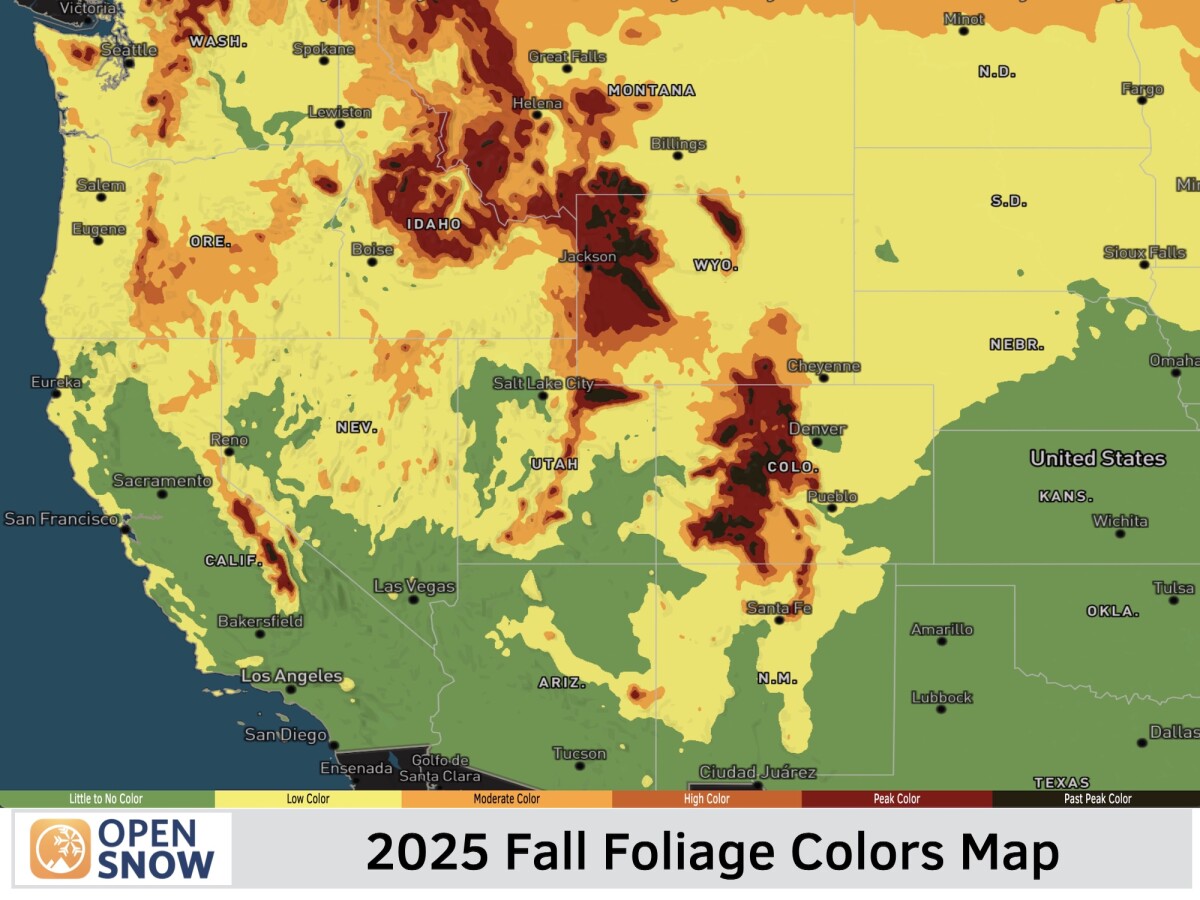Western US Daily Snow

By Alan Smith, Meteorologist Posted 2 years ago July 19, 2023
Temps Remain Hot But Monsoonal Moisture Enters the Picture
Summary
Above-average warmth will continue west of the Divide for the foreseeable future while areas east of the Divide will see a brief cool-down. Monsoon moisture is also increasing across the West with t-storms favoring Utah, Colorado, & New Mexico during the 2nd half of this week. Monsoon moisture decreases slightly this weekend, then becomes more consistent next week with an uptick in t-storms.
Short Term Forecast
Big Picture:
A ridge of high pressure will continue to dominate the pattern across the Western U.S. with consistent above-average warmth expected west of the Continental Divide, except for areas right along the coast where temps will be cooler.
A cold front sliding down the east side of the Continental Divide on Wednesday/Thursday will also result in cooler temps for these areas for a few days.

Although temperatures are hot across the West right now, the North American Monsoon is getting underway with increasing moisture and thunderstorm chances across parts of the West.
Learn More → Monsoon Season Begins in the Western U.S.
A shortwave disturbance moving across the West Central U.S. will interact with monsoonal moisture to result in scattered thunderstorms across the Sierra Nevada Range, Great Basin, Utah, and Colorado on Wednesday and Thursday.
The cold front sliding into Eastern Colorado will also usher in deeper moisture into the Front Range on Thursday.

Fire and Smoke Outlook:
There are two focal points of fires and smoke across the West right now.
First, numerous fires continue to burn across Central BC and Alberta. Fire behavior and intensity have decreased somewhat (for now anyways) thanks to cooler and wetter conditions early this week.
Over the next five days, smoke will be most impactful across central portions of BC and Alberta with occasional periods of lighter smoke for more popular outdoor regions of Southeast BC and Western Alberta. Light to moderate smoke will also drift into Central/Eastern Montana from time to time.
Second, the Flat Fire continues to grow in Southwest Oregon. Persistent north/northeast winds across this region will result in smoky conditions across portions of Southwest Oregon as well as coastal California all the way down to the Bay Area.

Forecast for Wednesday:
Scattered thunderstorms can be expected across the Sierra Nevada Range, the state of Nevada, and Utah with more numerous storms developing across the western and central ranges of Colorado (near and west of the Divide). More isolated thunderstorms can be expected further south in New Mexico and Southeast Arizona.

Forecast for Thursday:
The focus of thunderstorm activity will shift into Colorado with heavy rain-producing thunderstorms expected near and east of the Divide in particular. Thunderstorm coverage will be more scattered in nature across Western Colorado, Northern Utah, and much of Wyoming with isolated coverage into Idaho and Montana.

Forecast for Friday:
Scattered thunderstorms can be expected near and east of the Divide in Colorado and Wyoming with more numerous thunderstorms expected further south into New Mexico. Areas west of the Divide in Colorado and Utah will see a drying trend, while just enough moisture will reach portions of Arizona, Nevada, and California to result in a chance of isolated thunderstorms.

Forecast for Saturday to Sunday:
Monsoonal moisture will gradually work its way back into the Western U.S. over the weekend, resulting in scattered thunderstorms across Arizona and New Mexico with more isolated activity further north. Thunderstorm coverage should be a bit higher on Sunday compared to Saturday in most areas.

Extended Forecast
Outlook for Monday (July 24) to Friday (July 28):
The monsoon will start to become more established across the Southwest during this period, with thunderstorm activity favoring Arizona, Utah, Central/Western Colorado, Western New Mexico, and possibly the SoCal Mountains.
Climatologically speaking, late July is a wetter time of year across these mentioned southwest regions, so rainfall/thunderstorm potential is expected to be about "normal" for this time of year.
The Olympic Peninsula and Northern Washington Cascades could also see some light showers at times during this period as the region is clipped by low pressure systems passing to the north, while Western Canada should see more numerous showers and thunderstorms.

Despite the gradual uptick in monsoonal moisture, confidence is very high that temperatures will remain hotter than average across most of the West. The only exception is the Pacific Northwest, where temps are expected to be near if not slightly below average.

Thanks so much for reading! Next update on Friday (July 21).
Alan Smith
About Our Forecaster




